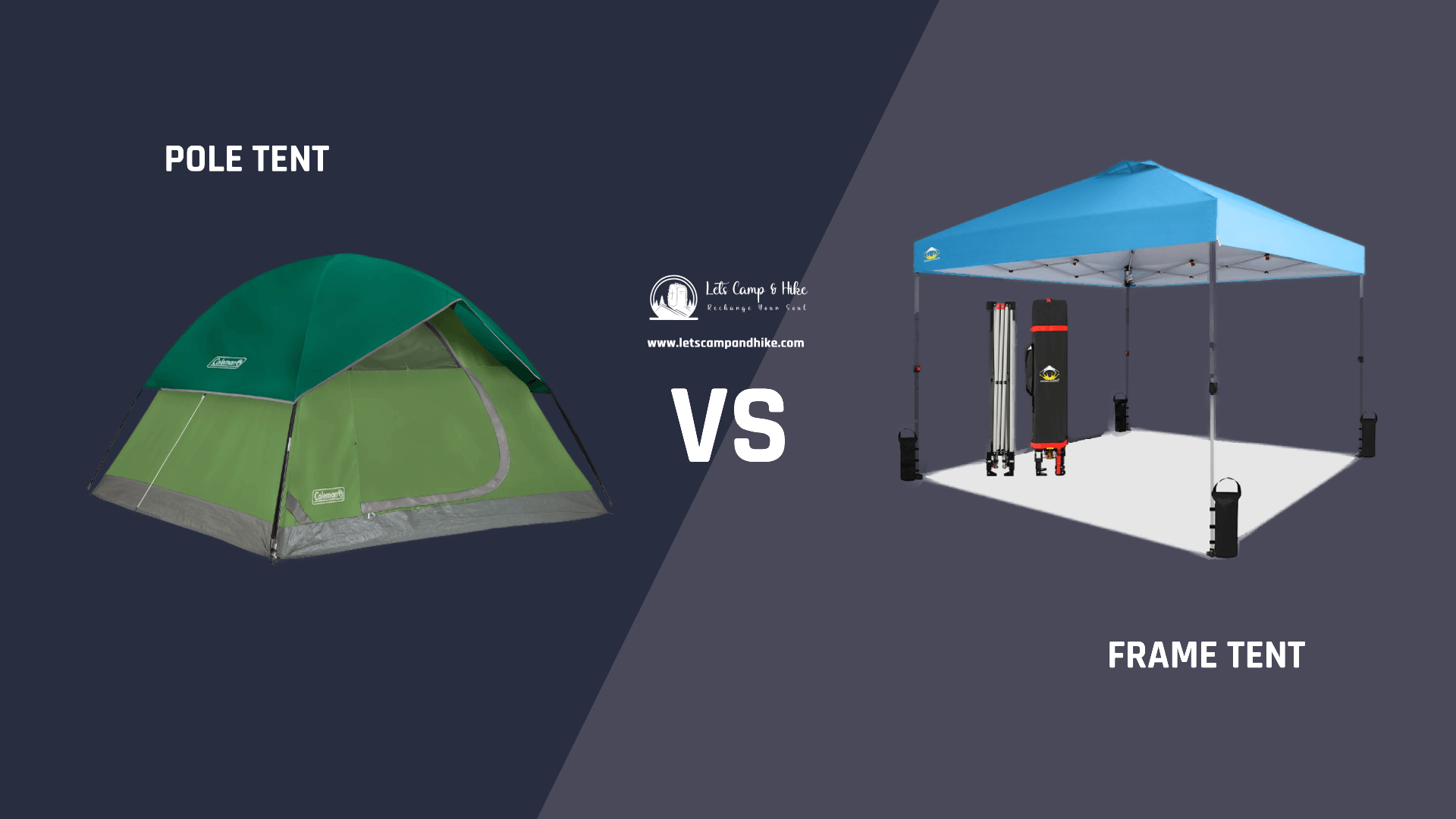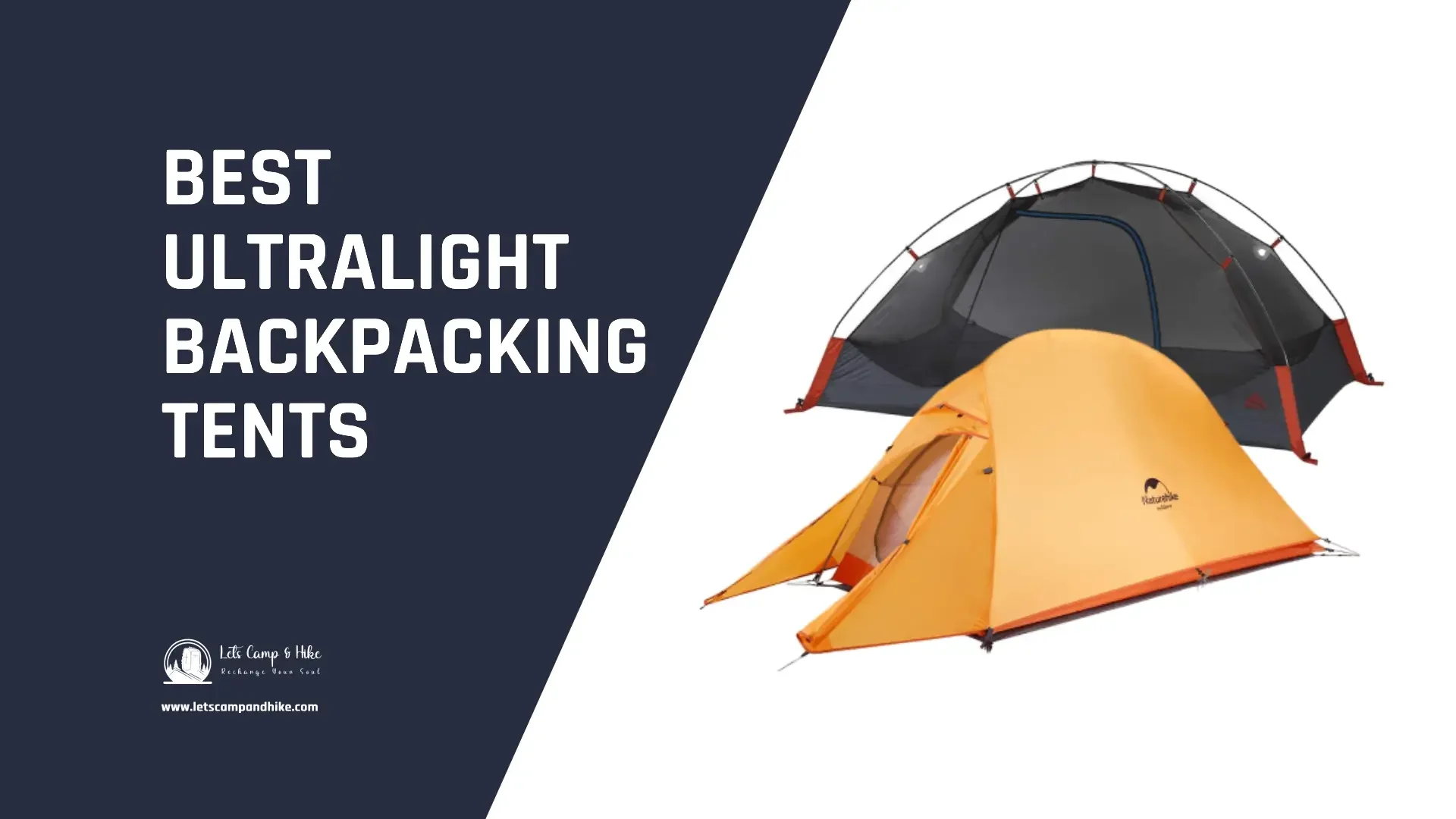When it comes to selecting the right trekking pole, the question arises: Which one is better, carbon fiber vs aluminum trekking poles? Trekking poles are essential gear for hikers, trekkers, and adventurers alike, offering support, stability, and reducing strain on the body. In this comprehensive guide, we’ll explore the differences between carbon fiber and aluminum trekking poles to help you decide which option is suitable for your outdoor pursuits.
- Also read:
Carbon Fiber vs Aluminum Trekking Poles: Comparison Table

Here’s a comparison table of the Carbon Fiber vs Aluminum Trekking Poles. This table breaks down the key differences and helps provide a clear comparison for hikers and trekkers, considering either carbon fiber or aluminum trekking poles.
Feature | Carbon Fiber Pole | Aluminum Pole |
Preview | ||
Weight | Lightweight, ideal for long hikes | Heavier, but not excessively so |
Durability | More prone to cracking under impact | Highly durable, can bend but less likely to break |
Vibration Dampening | Excellent at reducing vibrations on rocky terrains | Transfers more vibrations, leading to more hand fatigue |
Stiffness | Very stiff, providing more stability in smooth terrain | More flexible, can handle impacts and bends without snapping |
Environmental Impact | Harder to recycle, more energy-intensive production | Easier to recycle, lower environmental footprint |
Performance in Rough Terrains | Performs well but can be damaged on rugged, uneven ground | Excels in rough terrains, durable and impact-resistant |
Best for Slippery Conditions | Less ideal as it can crack under sudden pressure | Better for wet or slippery conditions due to flexibility |
Shock Absorption | Superior shock absorption, reduces strain on joints | Decent shock absorption, but more vibrations felt |
Pole Adjustability | Available with twist-lock or lever-lock mechanisms | Available with twist-lock or lever-lock mechanisms |
Maintenance | Requires careful handling to avoid cracks | Low maintenance, can bend back into shape if needed |
Longevity | Long-lasting if handled carefully | Very durable and long-lasting even under tough conditions |
Ideal For | Ultralight backpackers, long-distance hikers | Casual hikers, rugged terrain explorers, budget-conscious |
Price |
Understanding Carbon Fiber Trekking Poles
Composition and Structure of Carbon Fiber
Carbon fiber is a composite material made by binding carbon atoms into a crystalline structure. This process creates a solid material that’s lightweight yet rigid. In trekking poles, carbon fiber is often used because of its lightweight properties, making it an attractive option for long-distance hikers who prioritize reducing their pack weight.
Benefits of Carbon Fiber Trekking Poles
- Lightweight: One of the standout features of carbon fiber trekking poles is their weight—or lack of it. Carbon fiber poles are incredibly lightweight, often weighing less than aluminum poles, which makes them a popular choice for ultra-light backpackers and long-distance hikers.
- Stiffness and Stability: Carbon fiber poles are known for their rigidity. This stiffness can provide superior stability on certain terrains, reducing the effort needed to stabilize yourself.
- Vibration Dampening: Carbon fiber absorbs vibrations better than aluminum. This feature is handy when trekking over rocky, uneven terrain, as it minimizes the jarring effect on your hands and arms.
Downsides of Carbon Fiber Trekking Poles
- Fragility: Despite their strength, carbon fiber poles can be more brittle compared to aluminum. A strong impact, like being jammed between rocks, could cause a carbon fiber pole to crack or break.
- Cost: Carbon fiber trekking poles are usually more expensive than aluminum ones. The manufacturing process is more complex, which increases their price point.
- Material: Carbon Fiber, Rubber
- Shaft Material: Carbon Fiber
- Extended Length: 54 Inches
Understanding Aluminum Trekking Poles
Composition and Structure of Aluminum
Aluminum trekking poles are made from aluminum alloys, which are combinations of aluminum and other elements to improve their strength and durability. Unlike carbon fiber, aluminum is a metal, which gives it a different set of physical properties.
Benefits of Aluminum Trekking Poles
- Durability: Aluminum trekking poles are much more durable and resistant to impacts than carbon fiber. If an aluminum pole gets bent or damaged, it’s often possible to bend it back into shape without breaking it.
- Cost-Effective: Generally, aluminum poles are more affordable than carbon fiber poles. They provide an outstanding balance between performance and price, making them an excellent choice for beginner hikers or those on a budget.
Downsides of Aluminum Trekking Poles
- Heavier Weight: Aluminum poles tend to be heavier than their carbon fiber counterparts, which can be a disadvantage for those looking to shave every possible ounce off their gear.
- More Vibration: Aluminum transfers vibrations more readily than carbon fiber, meaning your hands and arms may feel more of the impact when trekking over rough terrain.
- Material: Aluminum
- Shaft Material: Aluminum
- Extended Length: 54 Inches
Carbon Fiber vs Aluminum Trekking Poles: Key Differences
Weight Comparison
Weight is one of the most significant differences between the two materials. Carbon fiber trekking poles are notably lighter, making them ideal for long-distance hikers and those aiming to reduce pack weight. Aluminum poles, while heavier, offer more durability in return.
Durability and Strength Differences
Aluminum is more durable in terms of impact resistance, as it can bend and not break. In contrast, carbon fiber, while strong, is more susceptible to cracking under pressure. If you frequently trek in harsh conditions where your poles take a beating, aluminum might be the better choice.
Flexibility and Stiffness Variations
Carbon fiber poles are stiffer than aluminum poles, which means they offer better performance when stability is critical. However, aluminum’s flexibility allows it to absorb more shocks from hard impacts, reducing the chance of snapping.
Carbon Fiber vs Aluminum Trekking Poles: Cost Comparison
Aluminum poles are generally cheaper than carbon fiber poles, making them a more budget-friendly option. For hikers new to trekking or those on a tight budget, aluminum offers excellent value for money.
- Material: Aluminum
- Shaft Material: Aluminum
- Extended Length: 54 Inches
Environmental Impact: Which is Greener?
The environmental impact of manufacturing carbon fiber versus aluminum is complex. Aluminum can be recycled relatively easily, reducing its environmental footprint. Carbon fiber, on the other hand, is more challenging to recycle, and its production process requires more energy, leading to a higher environmental cost.
Carbon Fiber vs Aluminum Trekking Poles: Performance in Various Terrains
Carbon Fiber in Rough Terrains
Carbon fiber’s stiffness makes it ideal for smooth, consistent trekking. In flat, predictable terrains, it’s lightweight and rigidity shine. However, in rougher environments, carbon fiber poles may be more susceptible to damage if jammed or knocked against rocks.
Aluminum in Rough Terrains
Aluminum trekking poles perform well in rugged, unpredictable terrains. Their flexibility and durability make them better suited for rocky or uneven paths where your poles are likely to take a beating.
Best Trekking Pole for Wet or Slippery Conditions
For wet or slippery conditions, aluminum poles tend to hold up better due to their impact resistance. Carbon fiber poles, though lightweight, are more vulnerable to snapping under sudden pressure or torque in slick conditions.
Best Trekking Pole for Rocky or Uneven Ground
On rocky or uneven terrain, aluminum trekking poles are the preferred choice due to their durability and ability to withstand impacts. Carbon fiber poles are still usable but must be handled with more care.
- Material: Aluminum
- Shaft Material: Aluminum
- Extended Length: 54 Inches
Carbon Fiber vs Aluminum Trekking Poles: Comfort and Handling
Grip and Shock Absorption
Both materials offer good comfort, but carbon fiber’s vibration dampening makes it slightly more comfortable to use on rocky ground. The grip materials, such as cork or foam, also play a significant role in overall comfort, regardless of the pole’s material.
Pole Adjustability: Twist-Lock vs Lever-Lock
Most trekking poles come with either twist-lock or lever-lock mechanisms for adjustability. This feature is independent of the material but worth considering. Lever-lock systems are quicker and easier to adjust, while twist-locks are more compact but slightly trickier to handle.
Vibration and Impact Resistance
Carbon fiber excels in vibration dampening, absorbing shocks from rocky terrain. However, aluminum’s impact resistance allows it to survive harsher knocks without snapping, making it better suited for unpredictable environments.
- Material: Carbon Fiber, Rubber
- Shaft Material: Carbon Fiber
- Extended Length: 54 Inches
Longevity and Maintenance
Care and Maintenance of Carbon Fiber Poles
Carbon fiber trekking poles require careful handling to prevent cracks or splits. It’s essential to inspect them regularly and store them properly when not in use to prolong their lifespan.
Care and Maintenance of Aluminum Poles
Aluminum poles are relatively low-maintenance. Even if they get bent, they can often be straightened out. However, they can rust over time if exposed to moisture, so drying them after wet hikes is crucial.
User Preferences and Scenarios
Ideal Situations for Carbon Fiber Poles
Carbon fiber trekking poles are best suited for hikers who prioritize weight savings and don’t often find themselves in rough, rocky terrains. They are ideal for long-distance hikers and ultra-light backpackers who want to minimize their pack weight.
- Material: Carbon Fiber, Rubber
- Shaft Material: Carbon Fiber
- Extended Length: 54 Inches
Ideal Situations for Aluminum Poles
Aluminum poles are perfect for casual hikers, beginners, or those who frequently trek in rugged, uneven terrains. Their durability and lower cost make them a practical option for hikers who want dependable performance without breaking the bank.
- Material: Aluminum
- Shaft Material: Aluminum
- Extended Length: 54 Inches
Expert Recommendations
Who Should Choose Carbon Fiber?
Suppose you’re an experienced hiker who values lightweight and is willing to invest more for premium performance. In that case, carbon fiber trekking poles are the way to go. They’re excellent for longer hikes and less demanding terrains.
- Material: Carbon Fiber, Rubber
- Shaft Material: Carbon Fiber
- Extended Length: 54 Inches
Who Should Choose Aluminum?
For hikers who prioritize durability, especially those who often trek in rocky or complex conditions, aluminum poles are the better choice. They’re also great for those on a budget, as they provide excellent durability without the high price tag.
- Material: Aluminum
- Shaft Material: Aluminum
- Extended Length: 54 Inches
Conclusion
Choosing between carbon fiber and aluminum trekking poles comes down to personal preferences, budget, and the type of terrain you’ll be hiking. Carbon fiber poles excel in weight savings and stiffness, making them ideal for long-distance hikers. On the other hand, aluminum poles are durable, affordable, and better suited for rugged terrains. Consider your hiking style and needs before making your decision. You’ll be sure to choose the suitable trekking poles for your adventures!
Keep up with Let’s Camp & Hike to learn more about camping and hiking tips and tricks.
- Material: Aluminum
- Shaft Material: Aluminum
- Extended Length: 54 Inches
- Material: Carbon Fiber, Rubber
- Shaft Material: Carbon Fiber
- Extended Length: 54 Inches
Why Trust The Let’s Camp & Hike?
In every review, the Let’s Camp & Hike team conducts thorough research and spends hours reviewing the top models before recommending products.
Among other requirements, a product must have a strong track record of sales on Amazon, primarily favorable customer feedback, and special features to join our list of the best options.
Once we have whittled down our list of suggestions, we conduct more investigations and perhaps in-person testing to ensure the goods live up to our expectations. After the research phase, we create a comprehensive, easy-to-read article with our top picks and extra details to assist outdoor enthusiasts like you in making the best choice.
Faqs
Are carbon fiber trekking poles worth the higher cost?
Yes, for hikers who prioritize light weight and stiffness, carbon fiber poles are worth the investment.
Can aluminum poles break more easily?
Not necessarily. Aluminum poles are more likely to bend rather than break, making them more durable in rough terrains.
Which material is better for cold weather hikes?
Both materials perform well in freezing conditions, but carbon fiber’s lighter weight may be more advantageous in snow.
How do I maintain my trekking poles to last longer?
Always dry your poles after wet hikes and store them properly. For carbon fiber poles, avoid impacts that might crack the material.
What are the best brands for carbon fiber trekking poles?
Some top brands include Black Diamond, Leki, and Gossamer Gear for high-quality carbon fiber poles.




























